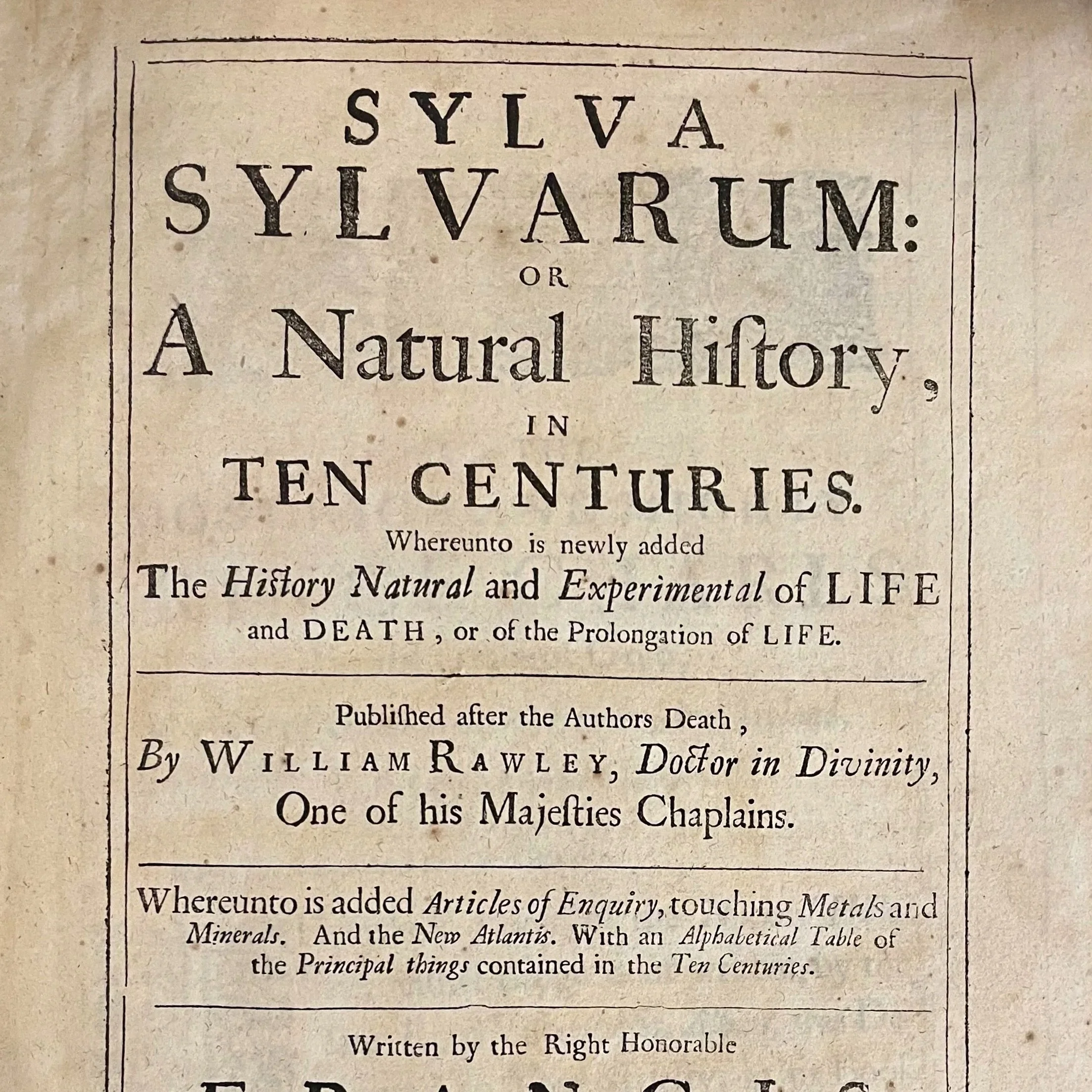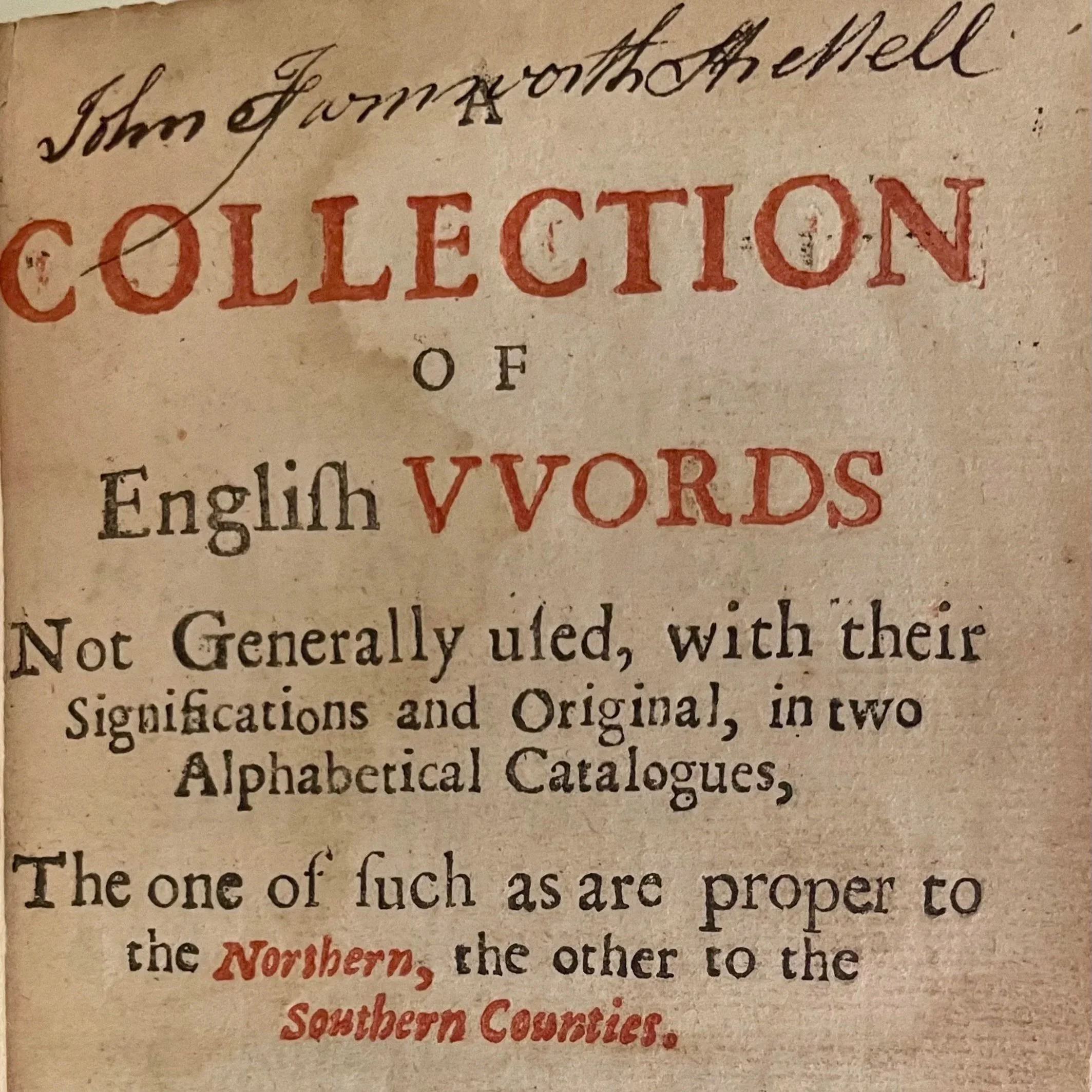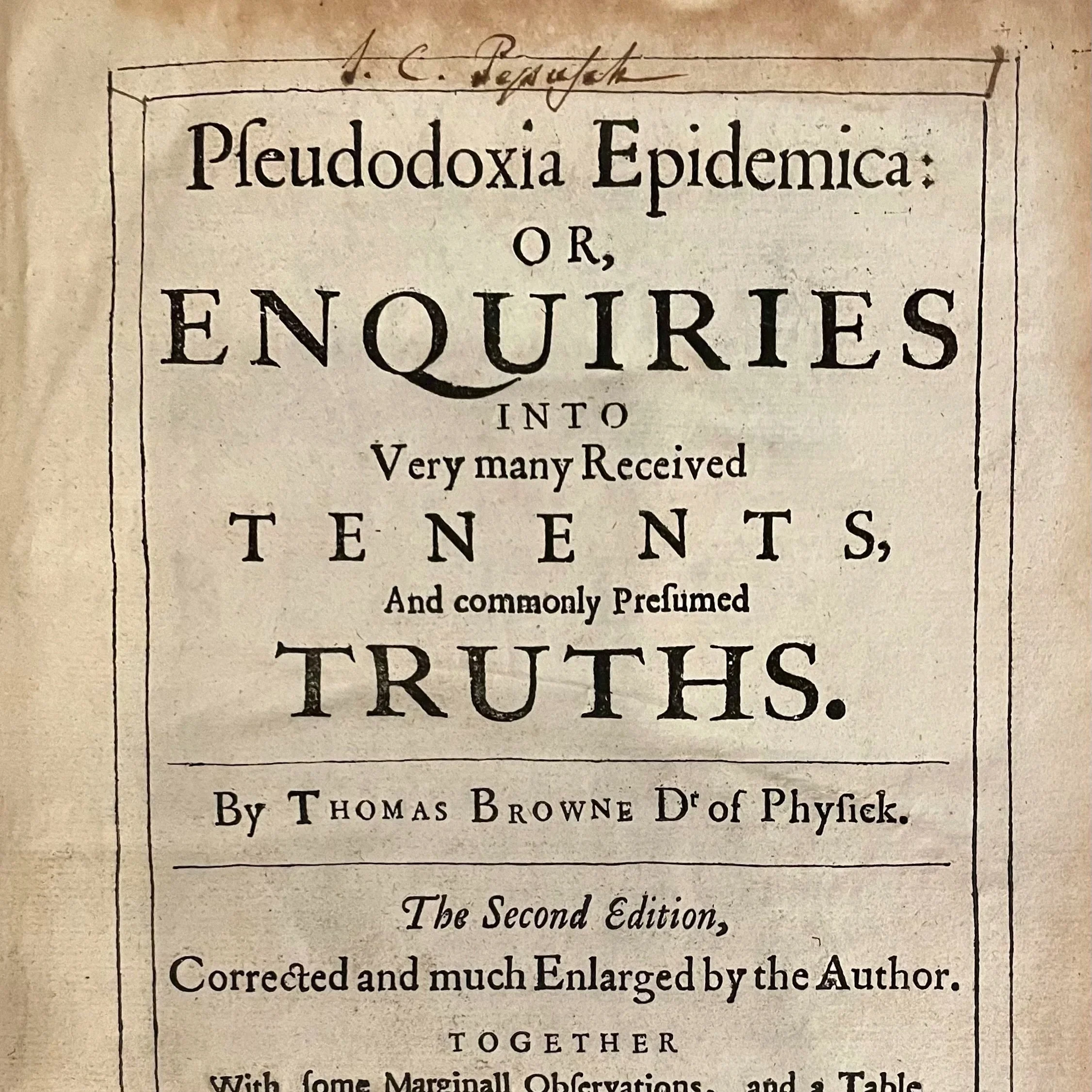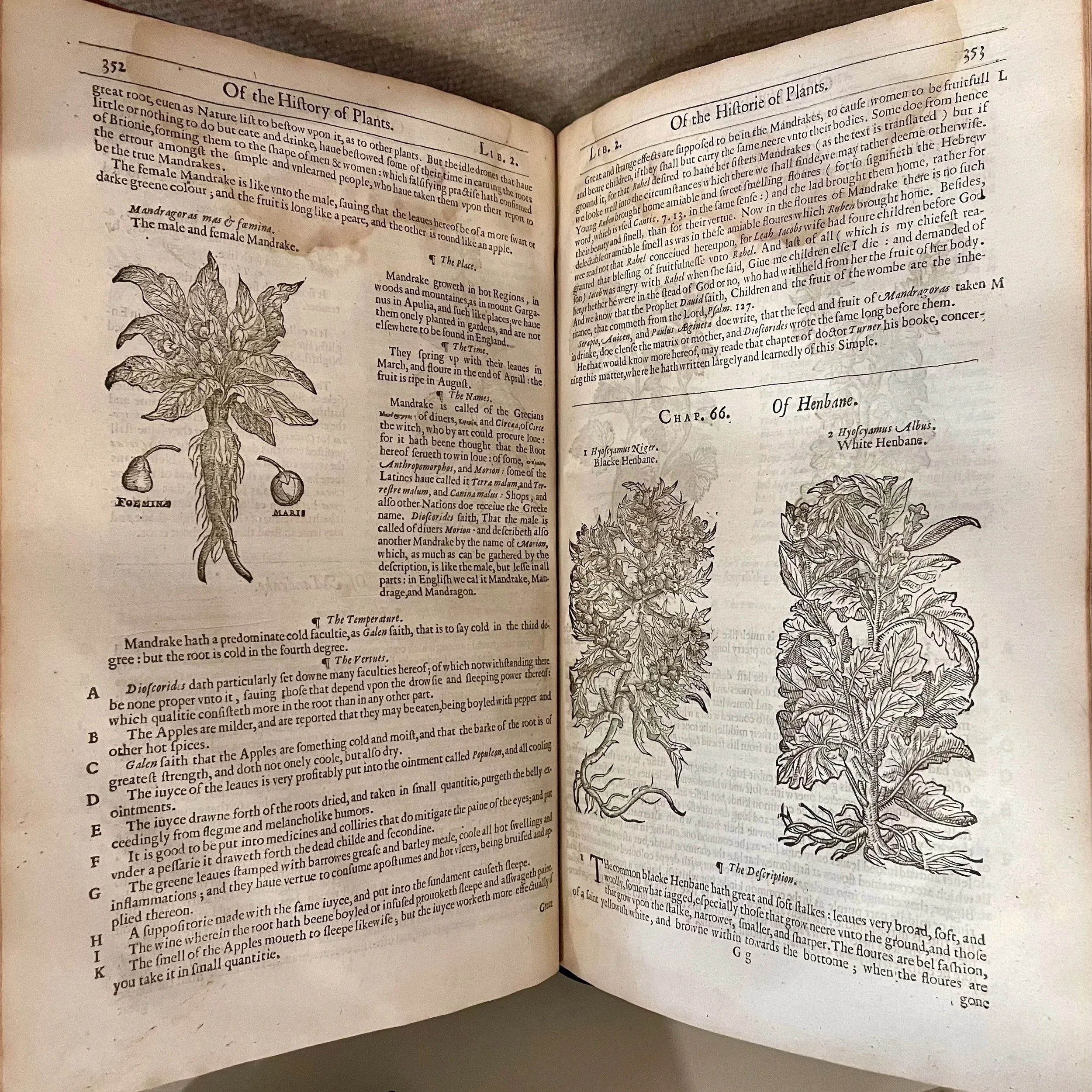
John Evelyn, Sylva, or a Discourse on Forest Trees (1679)
In its original context this text was a report to the British Navy that advocated for reforestation given the excessive felling of trees to build ships for war and exploration. However, it also contains details information on tree species and their uses, such as this image depicting how one might gather sap from birch trees.
Held in the Kinney Center’s rare book collection.

Francis Bacon, Sylva Sylvarum (1685)
Given the similarities of their titles, you might expect that this text, like Evelyn’s also focuses on trees. However, here the “forest of forests” becomes metaphor for a collection of Bacon’s experiments and observations of natural history, including metallurgy.
Held in the Kinney Center’s rare book collection.

John Ray, A Collection of English Words (1674)
This catalog of English words also contains catalogs of bird and fish species alongside instructions on refining various metals.
Held in the Kinney Center’s rare book collection.

Thomas Browne, Pseudodoxia Epidemica (1650)
Browne aims to disprove and discredit commonly held superstitions in this text. For example, he refutes the belief that mandrake roots shriek when pulled from the ground or frequently grow under gallows.
Held in the Kinney Center’s rare book collection.

John Gerard, The Herball or General History of Plants (1633)
The woodcut images of plants in Gerard’s Herbal also contain depictions of the root system. But in this example of the mandrake, notice the emphasis on the root over the leaves in comparison to the henbane.
Held in the Kinney Center’s rare book collection.




